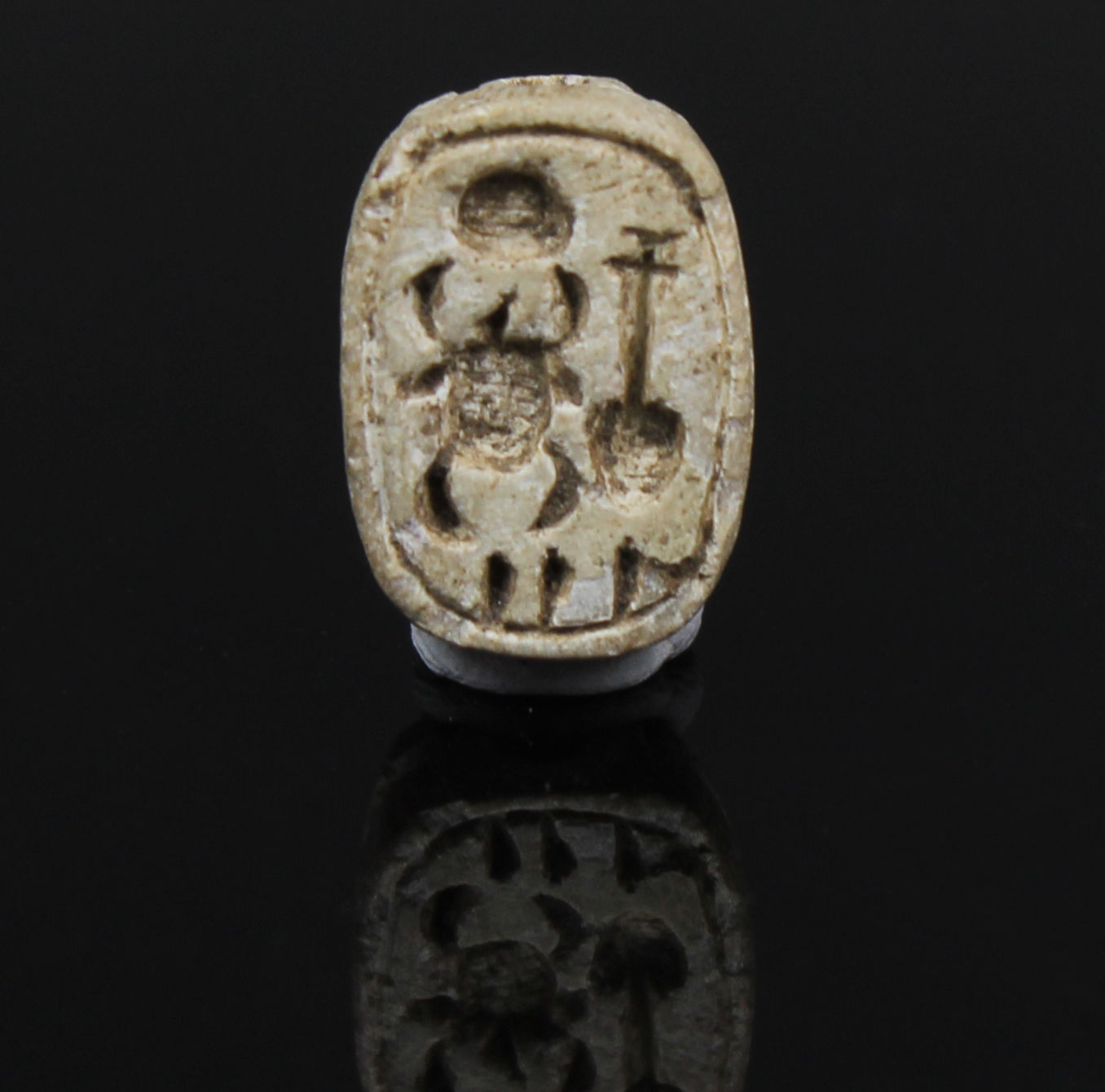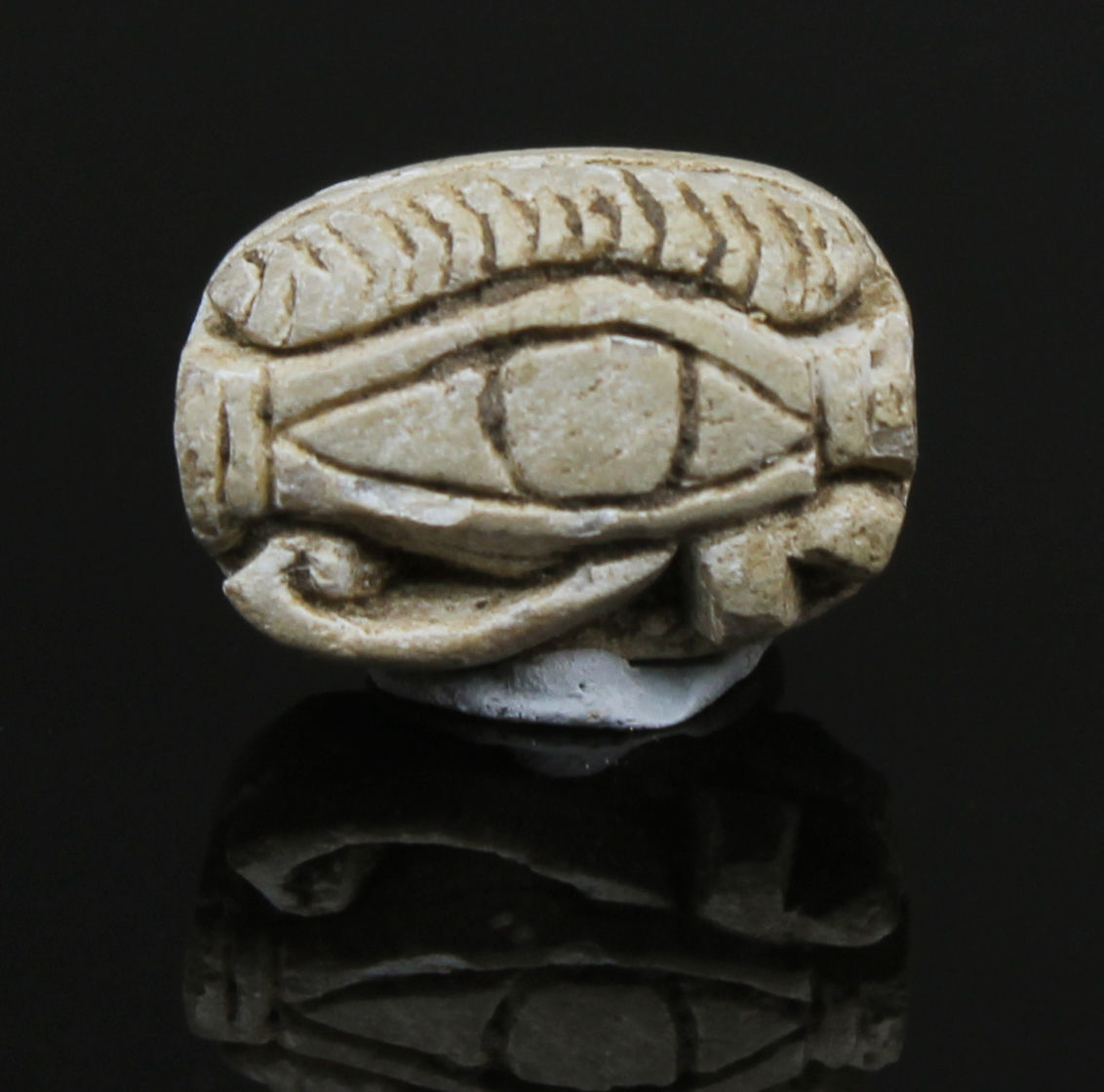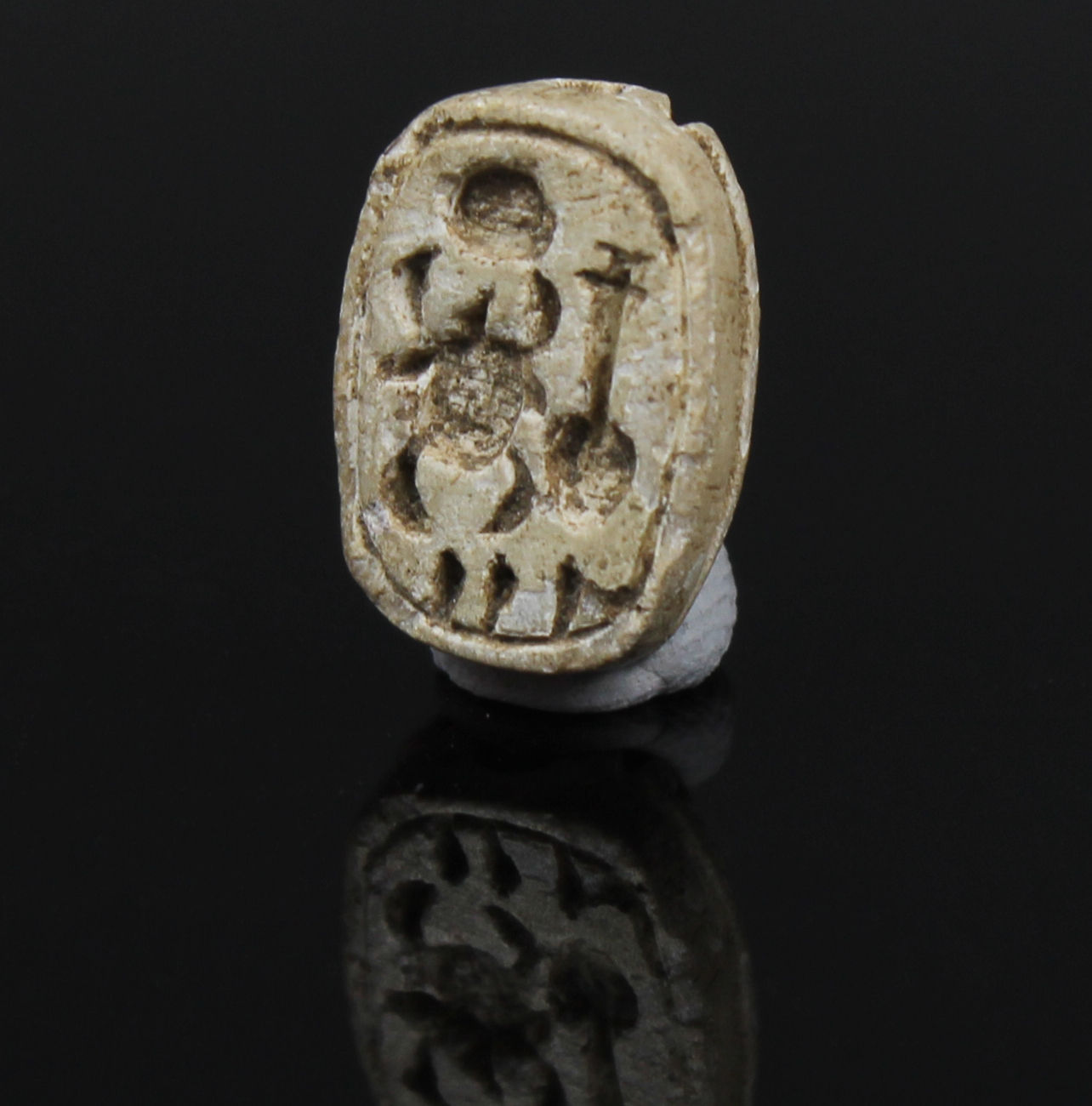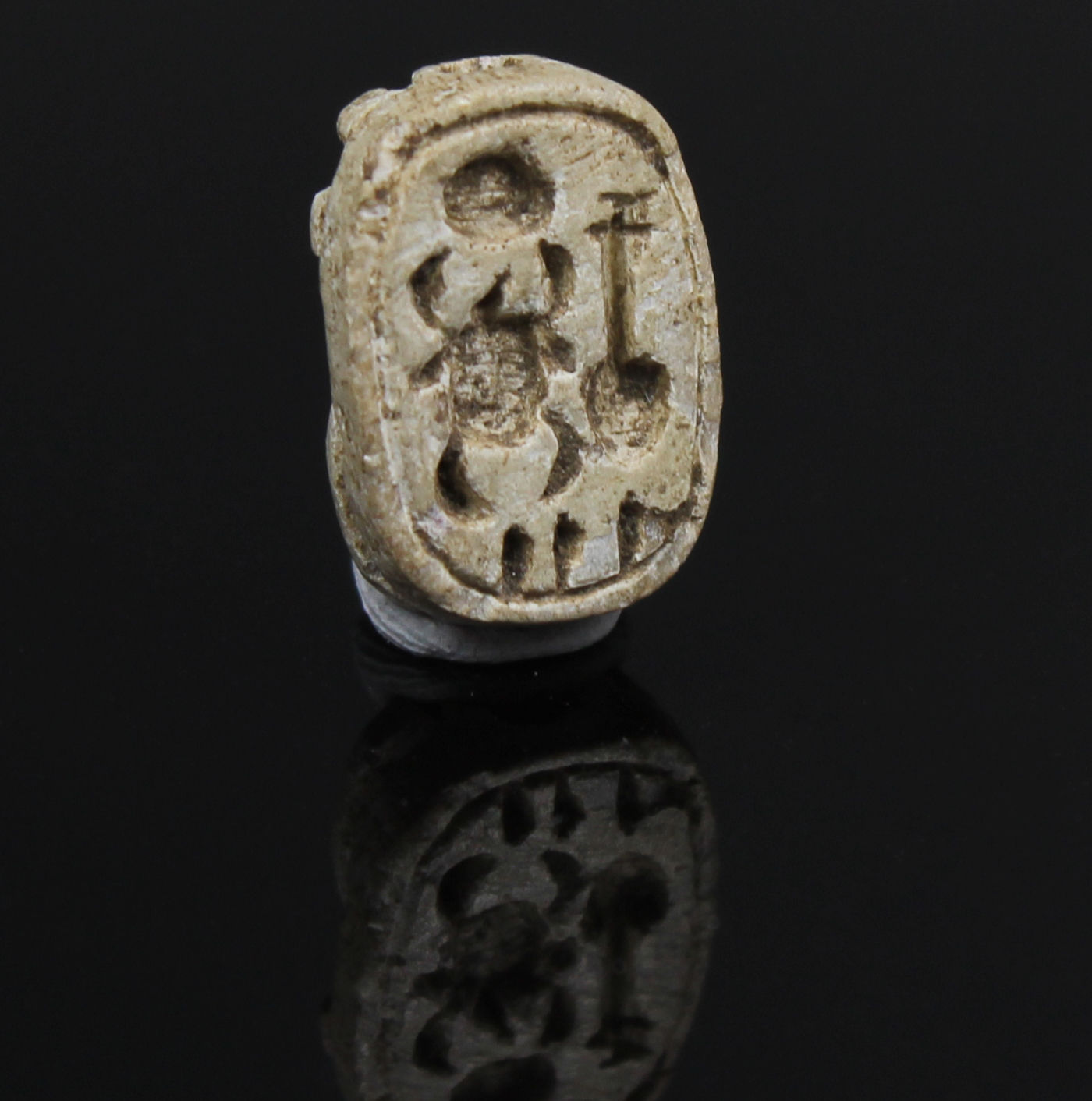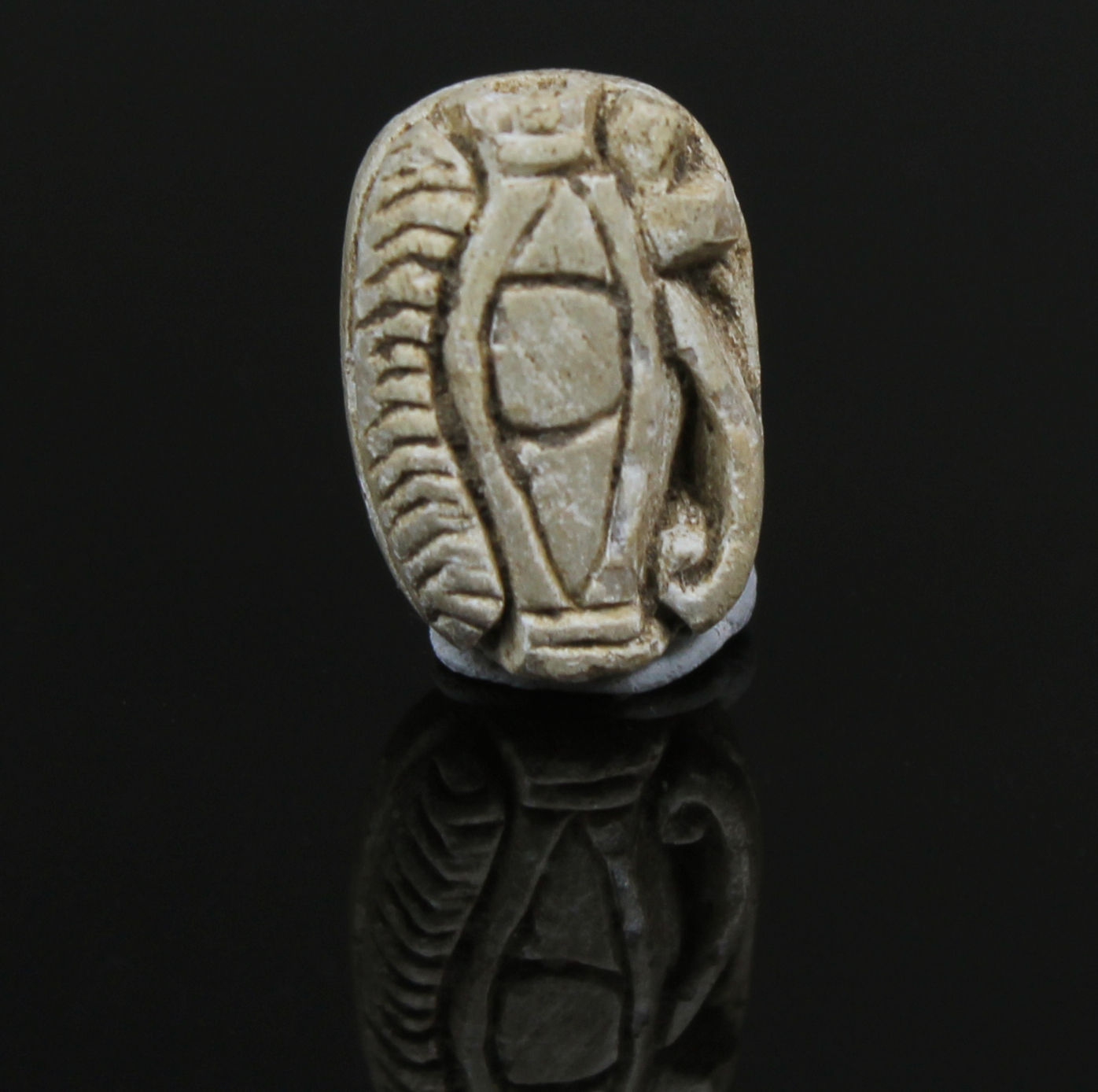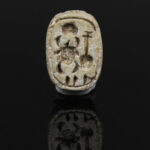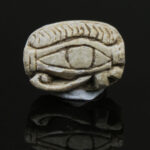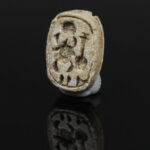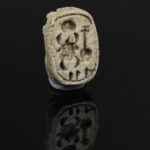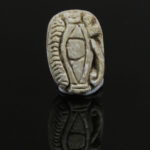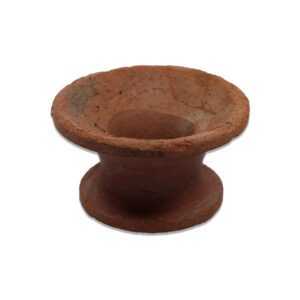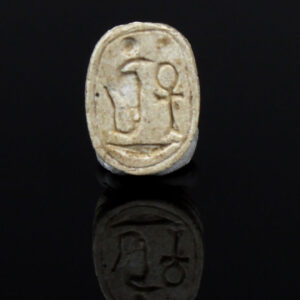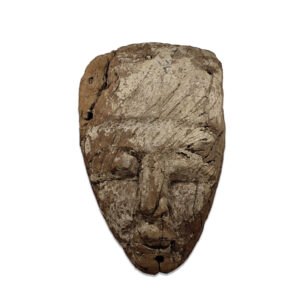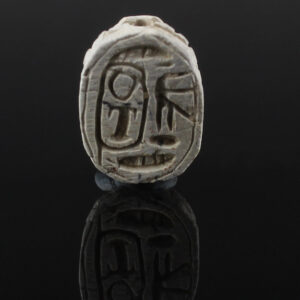Description
| ITEM | Scarab of pharaoh Akhenaten with and Udjat eye on the back |
| MATERIAL | Steatite |
| CULTURE | Egyptian |
| PERIOD | Amarna Period, 14th Century B.C |
| DIMENSIONS | 14 mm x 8 mm |
| CONDITION | Good condition |
| PROVENANCE | Ex Museum Exhibiton of the Arbeitsgruppe für Biblische Archäologie, Germany (Deaccession) |
Akhenaten, also known as Amenhotep IV, was an ancient Egyptian pharaoh who reigned during the 18th dynasty. He is particularly famous for his radical religious reforms during the Amarna Period (approximately 1353-1336 BCE). Akhenaten introduced a monotheistic religion centered around the worship of the sun disk, Aten, and he moved the Egyptian capital from Thebes to a newly established city called Akhetaten (modern-day Amarna). This period marked a significant departure from the traditional polytheistic beliefs of ancient Egypt. Akhenaten’s reign also saw artistic changes, with a more naturalistic style evident in depictions of the royal family. His successor, Tutankhamun, eventually reversed many of these reforms after Akhenaten’s death, restoring the old gods and traditions, making the Amarna Period a unique and transformative episode in Egyptian history.
The Udjat Eye, often called the “Eye of Horus” or the “Eye of Ra,” is a powerful symbol in ancient Egyptian mythology and is closely associated with protection, healing, and restoration. It is typically depicted as a stylized human eye with distinctive markings and falcon or cobra elements, representing the left eye of the god Horus or the right eye of the god Ra, depending on the context. The Udjat Eye was believed to have protective and healing properties and was used in amulets and jewelry to ward off evil and bring blessings. It was also associated with the concept of soundness and completeness, making it a symbol of well-being and protection in ancient Egyptian culture.


